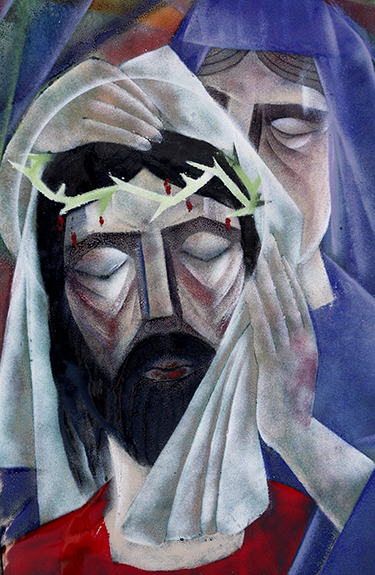By D.D. Emmons
(OSV News) – Permanently affixed, the 14 stations adorn parishes around the world. They are visible reminders of the last hours of Christ on earth, but, moreover, the Way of the Cross is symbolic of our lifelong journey filled with difficulties and marked with personal crosses. Unlike the followers of Christ on that Good Friday, we know that the 14th station is not the end, that death does not win; rather, in his sacrifice, we find the sure knowledge of eternal life.
Some of the 14 traditional stations are not found in the Gospels but have been passed down through tradition:
First Station: Jesus is condemned to death (Mk 15:6-15).
Second Station: Jesus carries his cross (Jn 19:15-17).
Third Station: Jesus falls the first time.
Fourth Station: Jesus meets his mother.
Fifth Station: Simon the Cyrene is made to bear the cross (Mk 15:21).
Sixth Station: Veronica wipes the face of Jesus.
Seventh Station: Jesus falls the second time.
Eighth Station: Jesus meets the women of Jerusalem (Lk 23:27-31).
Ninth Station: Jesus falls a third time.
Tenth Station: Jesus is stripped of his garments (Mt 27:35, Lk 23:34).
Eleventh Station: Jesus is nailed to the cross (Lk 23:33-43).
Twelfth Station: Jesus dies on the cross (Lk 23:44-46).
Thirteenth Station: Jesus is taken down from the cross (Jn 19: 38).
Fourteenth Station: Jesus is laid in the tomb (Jn 19: 38-42).

While the three falls of Jesus are not found in the Gospels, it is likely that he fell from the weight of the cross beam, which typically weighed more than 100 pounds, and because of his weakened condition from the scourging. That Jesus met his mother as he struggled along is most probable since she was always near him; finally, that some brave Christian stepped out of the crowd to wipe the blood, spit and sweat from his face also is likely.
The stations entered church devotion as Christians who could not visit Jerusalem began to erect local replicas of the holy sites based on information from people who had been to the city, such as the crusaders. Initially there was no continuity or standardization among these structures; some included as many as 37 stops, others as few as seven. Finally, in 1731, Pope Clement XII established the number of stations as 14.
In 1991, Pope St. John Paul II introduced a version of this devotion based entirely on the Scriptures. All 14 stations and the accompanying meditations can be found in the Bible. The Scriptural Stations are an alternative to the traditional Way of the Cross.
(D.D. Emmons writes from Pennsylvania.)
